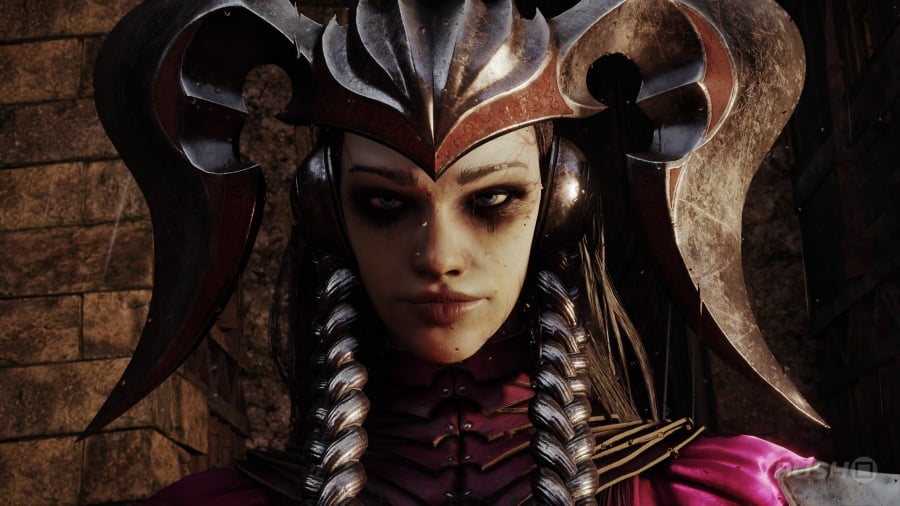
Blades of Fire is a dark fantasy action adventure game inspired by the modern God of War series by Santa Monica Studio and the Souls series from Fromsoftware, and it is a fairly convincing fusion of the two. At the heart of his story and his gameplay is the ability to forge a wide variety of powerful melee weapons and bring together the materials necessary to make it form his central gaming loop.
Developed by Mercurysteam, a Spanish development studio can be better known for Castlevania: Lords of Shadow, Blades of Fire in 2010, a solid fight and a large world full of secrets and hidden ways to explore. However, it is slightly disappointed with a simplistic writing and a rather generic parameter.
In past chandeliers, mythical and technologically advanced giant beings known as Forals reigned in the world until a cataclysmic conflict tried them. As a last act, the counterfeiters created humans and entrusted them with the secret of steel, thanks to the use of which humanity, in turn, came to dominate. Millenia later, Queen Nerea, a childhood friend of the protagonist Aran de Lira, launched a spell to transform the formerly powerful weapons of her stone enemies and reigns as a tyrant.

During the introduction of the game, Aran acquired one of the legendary hammers of the false people, allowing him to take the Herculean task of putting an end to Queen Nerea. The entire game is based on the simple fact of reaching the Royal Palace to defeat the Queen, and one of her greatest forces is the meaning of the adventure he gives as Aran, as well as his young companion, Adso, are inevitably drawn parallel and delayed to do so.
With a relatively high level of difficulty on the simplest framework (at least with regard to boss meetings), the fight is very in the from Fromsoftware, with some new twists and turns. To start, each front button allows Aran to attack on each side, or the goal is blowing on the heads of the enemies or the lower limbs. This system is complicated by certain enemies with different levels of resistance to damage (divided between blunt, drilling and cut) on different parts of their body, or by being only temporarily vulnerable. There is no leveling upwards either; Aran’s health and endurance can only be improved by finding collectibles in the environment, at Sekiro.

A massive variety of types of weapons allows tools that treat one or more types of damage, and switching between them in the middle of combat will often be crucial for success. Aran’s endurance bar will have to be managed appropriately to dodge and strike, but it is interesting to note that the blocking allows rapid recovery. Weapons will deteriorate quickly with use and can only be repaired so many times (determined by the forging process) before becoming useless. However, they can be recycled for common materials or offered to an NPC for rare components if you gain sufficient renown by dying many enemies.
The forge is a mechanic and a place where Aran can create new weapons, with schemes won by beating the enemies that carry them. It is a cool concept, although the required grinding can sometimes be boring, for example, to defeat a specific type of formidable enemy 40 times to win its particular sword variant. There is a forging mini-game which rewards fine crafts with additional forge stars (the number of times a weapon can be repaired at maximum sustainability), and dimensions such as length and Heft, as well as the specific type of materials used, everything for a highly customizable and somewhat addictive craft system.

The magic enclosures scattered around the world allow access to the forge and act as fast travel points, as well as places to rest and regain healing articles for limited use. However, this will lead to all non-boss enemies to reappear. It is a familiar configuration, with the undeniably satisfactory unlocking of shortcuts to the previous areas. Fire blades mix things by requiring various runes and keys to progress in specific tracks, with an occasional return required in previous regions. The average player will need more than 60 hours to see Aran’s trip through; The vast world of game of Blades of Fire is much larger than it could seem initially.
A mechanic that we particularly appreciated was the role of Adso in all of this. Aran’s young companion, although occasionally boring, adds a certain lightness to the otherwise lonely game, and although a non-combatant will take great notes on enemies and areas encountered. His collection is filled with various degrees, determined by the number of particular enemies that Aran has defeated. This is represented by a volume in the game illustrated with love, written from the point of view of Adso, and compiles things like enemy types, statistics, weaknesses and behaviors. He also lends a helping hand with environmental puzzles and can be called for additional regional information.

Fire blades look and work very well on PS5 Pro, now a frequency of images still high even during battles against dozens of enemies on the screen. We found the artistic style and the direction quite generic, however, and the design of the enemies was quite dull, with rare exceptions. Human enemies, in particular, reminded us of the gears of war without characterization: all bulging biceps, massive hands and no neck to speak.
Conclusion
Blades of Fire is a well -made and long action adventure game that will test your fighting skills, provided you can see it through. Inspired by some of the greatest gaming successes, he never managed to reach these high heights, disappointed by a generic framework and a dull artistic direction. However, it offers interesting concepts, with combat and craft mechanisms that remain satisfactory throughout.


